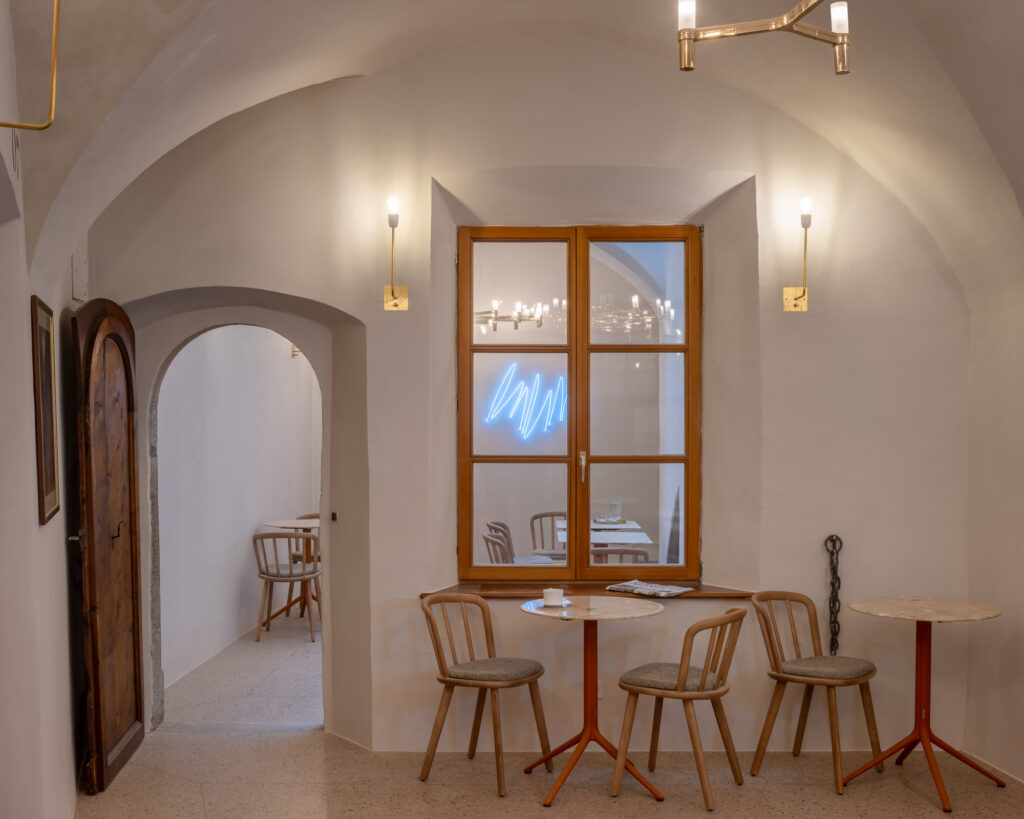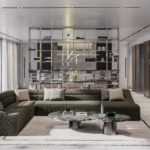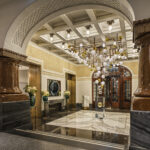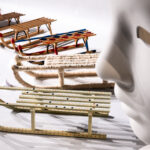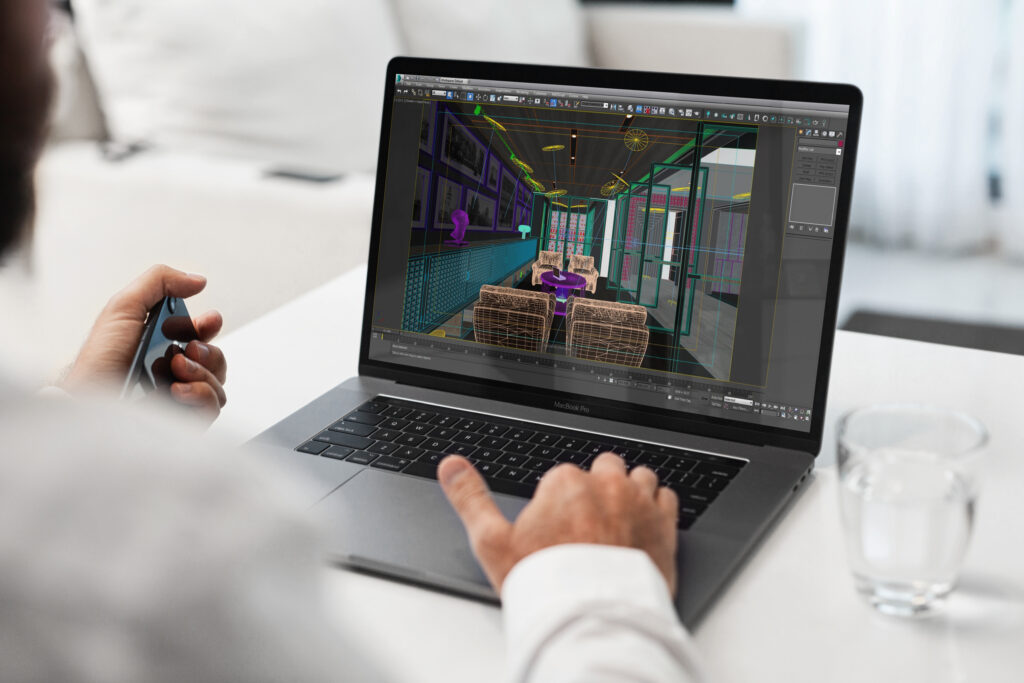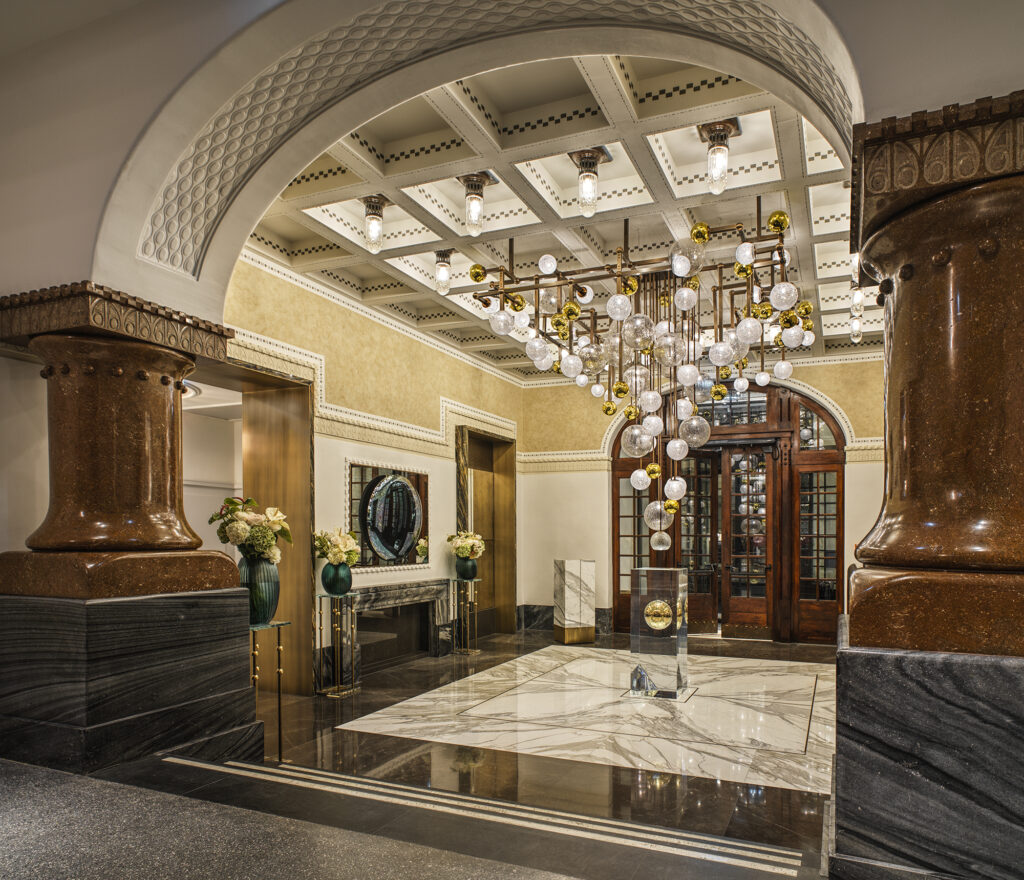Lasserhaus, a 15th-century aristocratic residence, becomes an intimate and contemporary Art Hotel
Breathing new life into a historic mansion finding the balance between respecting the existing and contemporary ways of living. This is what Vudafieri-Saverino Partners did in the heart of Brixen, South Tyrol, reinventing 15th-century aristocratic residence Lasserhaus in use and function.
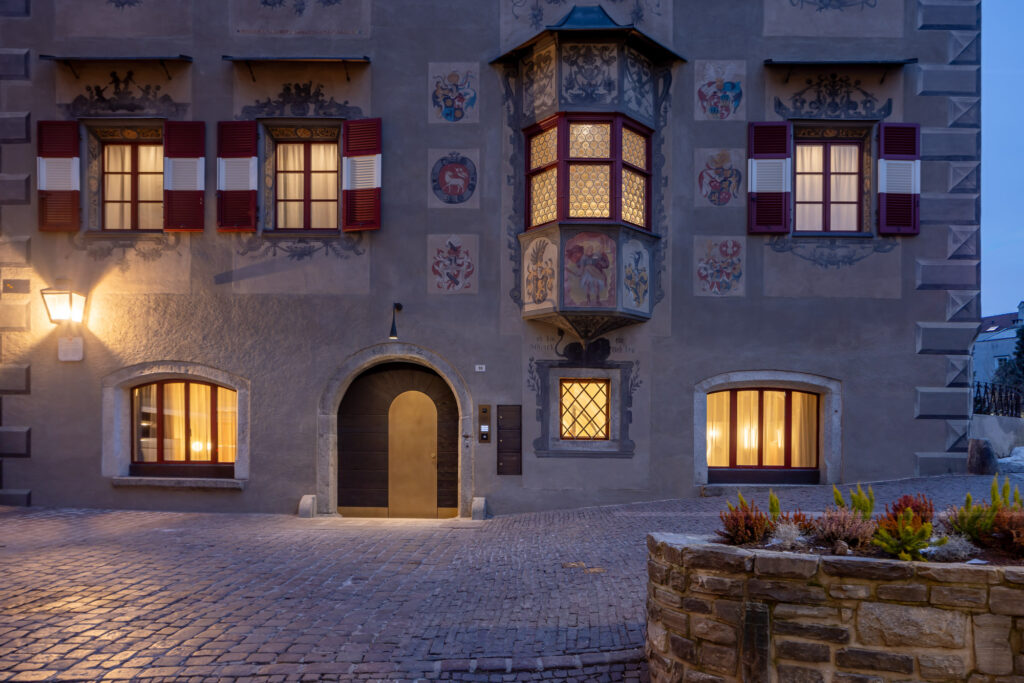
Commissioned by the Faller family, who have owned the old building for over 40 years, architects Claudio Saverino and Tiziano Vudafieri divided the spaces transforming the first two floors into a 4-star superior Art Hotel, while the two upper floors have become the family’s private residence. The new hospitality facility consists of ten rooms – including three suites, six double rooms and a single room – characterized by an intimate and sophisticated atmosphere, where the Faller family’s collection of classical paintings meets works by contemporary artists, transforming the space into a new point of interest for the community.
The concept by Vudafieri-Saverino Partners
For the architectural restoration and interior design of Lasserhaus, which is fully protected by the Superintendency of Archaeology, Fine Arts and Landscape, the architects worked on a concept focused on the dialogue between history and contemporaneity. With an approach that has always been attentive to the context and respectful of the genius loci, the Milan-based firm reinterpreted the original elements of the residence, making them coexist in the new hotel in a balanced way with contemporary design choices.
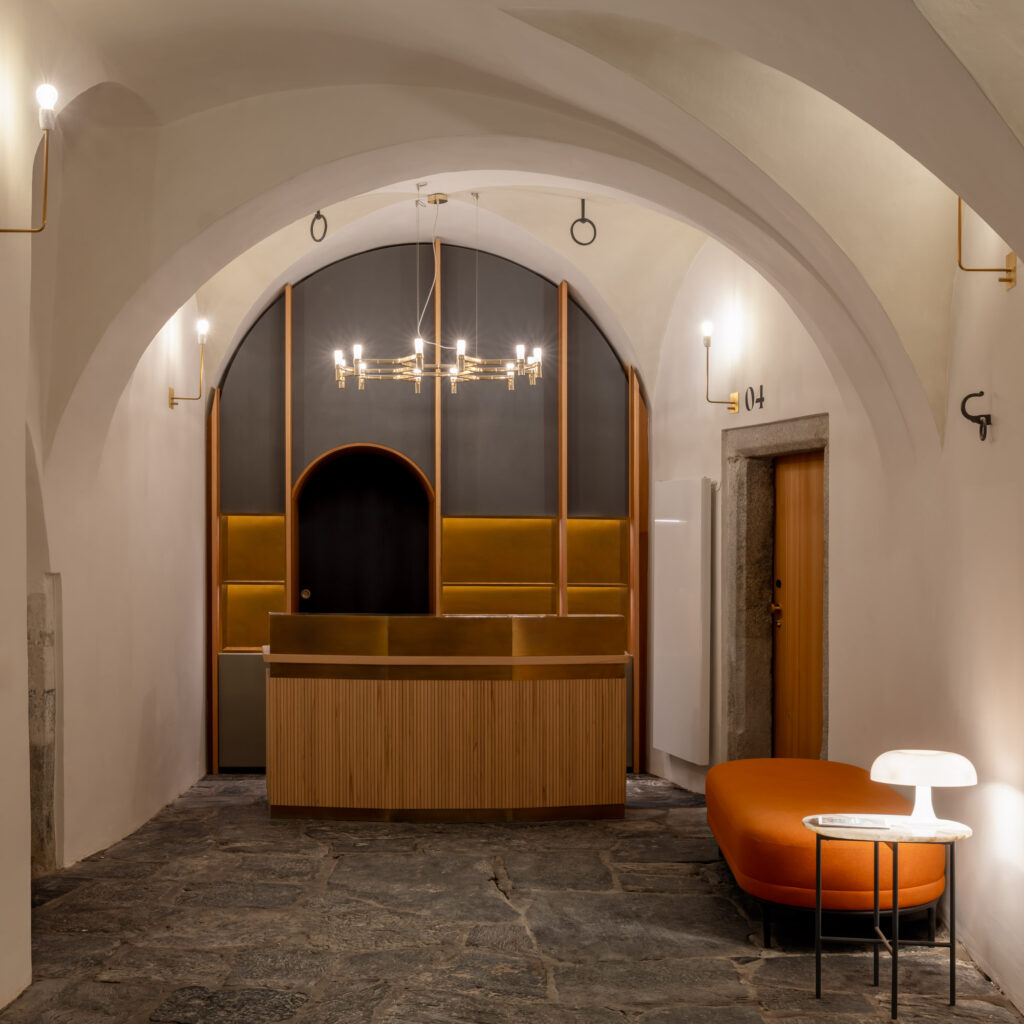
The project reflects the peculiarities of the episcopal city of Brixen, which blends its medieval tradition and atmosphere with contemporary cultural proposals. The interiors of this building located on the banks of the Eisack River are, in fact, embellished with works by five contemporary artists who have dealt with the past of the residence and, with their scattered works, have left a narrative mark on the various spaces.
Lasserhaus: the spaces
The ground floor of Lasserhaus houses the lobby and reception, a space full of memories, characterized by soft lighting and embellished with artwork and family objects. It leads to the first four rooms and a sitting room with a library nook available for guests, as well as to the wine cellar, equipped with a small tasting room decorated by Peter Kogler, an Austrian pioneer of digital art, with psychedelic patterns creating unusual spatial depths for guests to explore individually.
Walking up the internal staircase to the mezzanine – where the architects created a spa with sauna and hot tub – we find a work by Alexander Wierer representing the relentless progression of time and the transience of the present. The first floor houses the breakfast room and the other five rooms.

While the ancient features remain visible, the rooms have changed their look thanks to the combination of natural materials such as larch and beech wood, brass, which warms and embellishes the details, and tactile, soft surfaces such as velvet. Also characterizing them is the play of material textures that give a three-dimensional appeal to the upholstery. Some of the furnishings are salvaged, such as the restored chairs typical of the Tyrolean tradition; however, most of the pieces were designed by the architects: from the closets to the partition panels, from the velvet headboards with brushed larch rods to the desks, to the paneling behind the beds with minimalist and elegant wood planks.
The careful study of color resulted in a color palette inspired by autumn woods and mountains: from the green of the glossy laminate to the brown tones ranging from the red of brushed larch to warm dark burnt larch. Some rooms also feature artistic forays, such as Ingrid Hora’s “Barre a muro”, an expansive work that offers guests new perspectives and encourages them to unleash their imagination; or “Pensieri e pianeti”, an installation by renowned artist Esther Stocker consisting of ten sculptures that seem to float on the ceiling vault and, through broken geometries, dissolve fixed points.
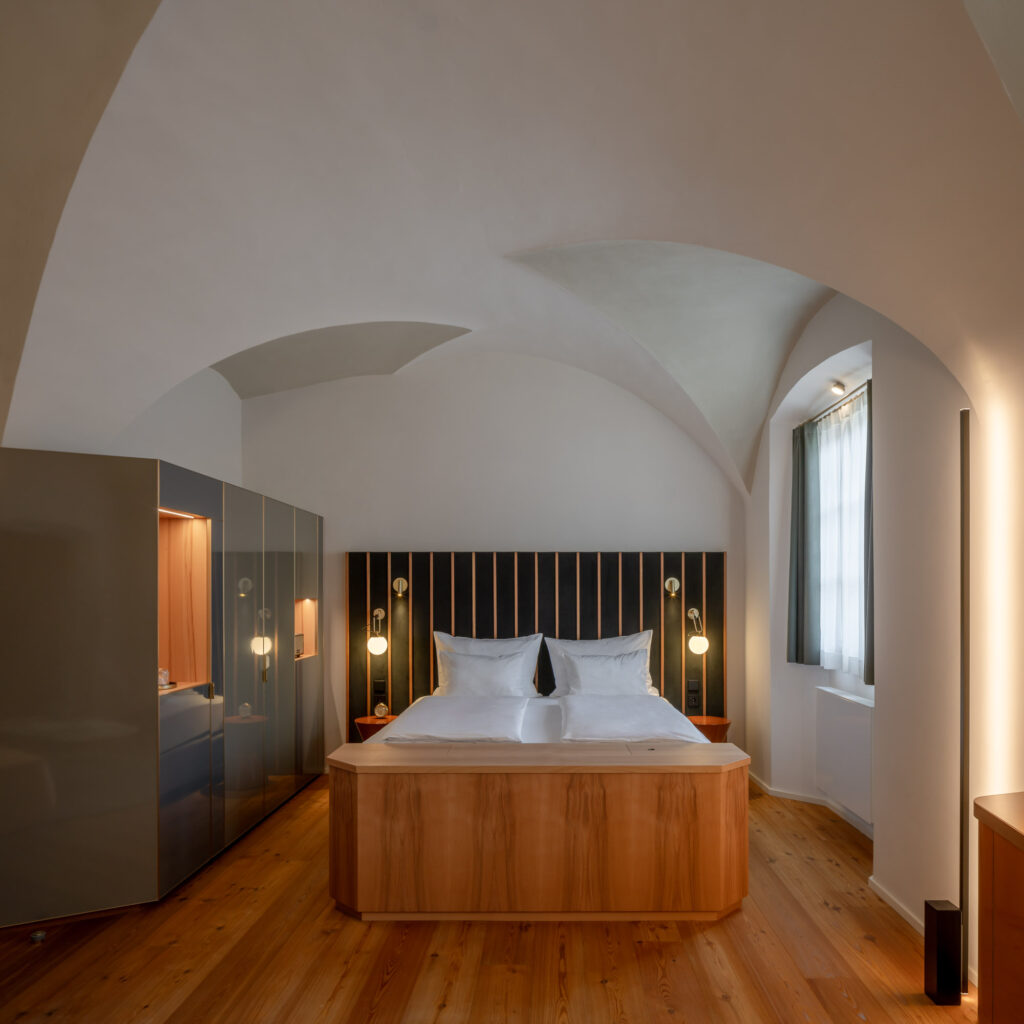
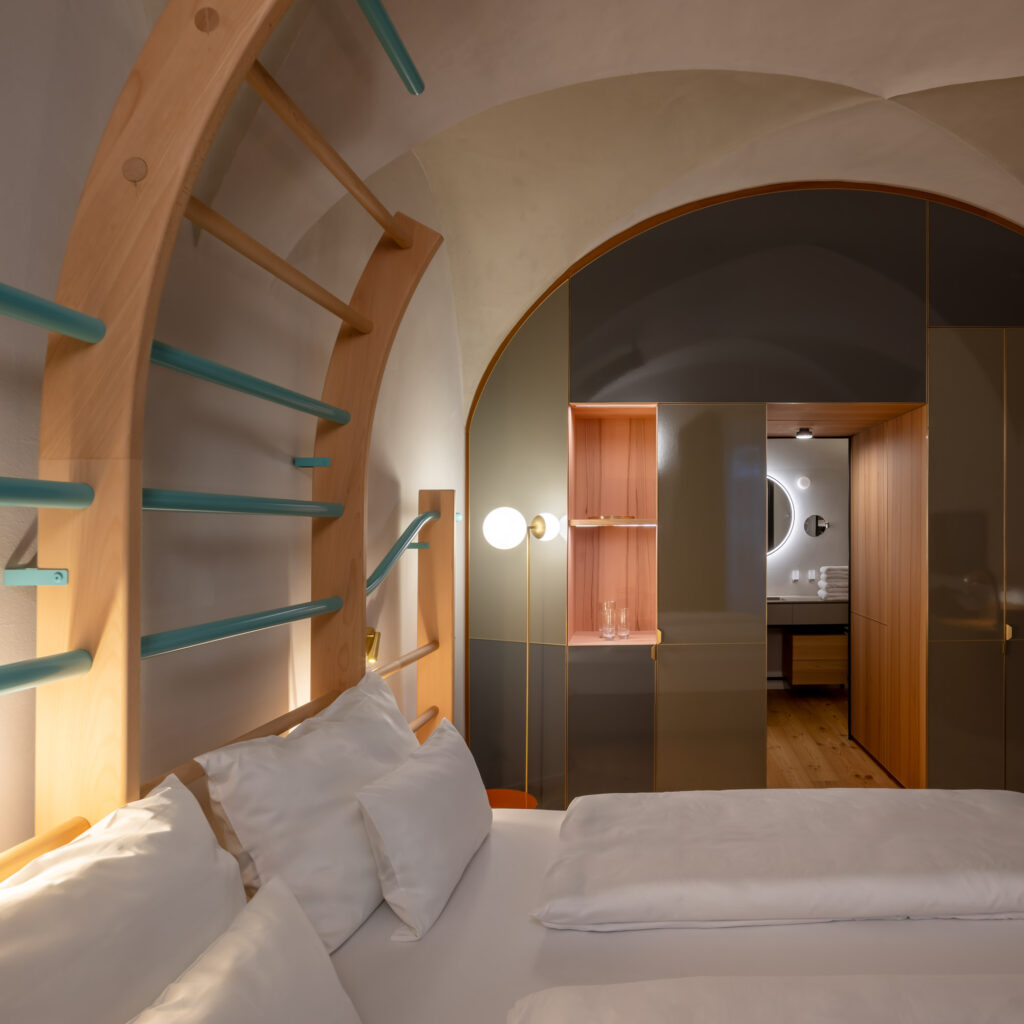
In terms of lighting, Vudafieri-Saverino Partners wanted to create a cozy atmosphere, with delicate diffused light coming from floor and wall lamps. For the common spaces, they chose pendant lamps such as the striking chandelier in the breakfast room, where there is also a work by visual artist Petra Polli, “Expect the best”.
The art collection
The Lasserhaus art project is the work of two curators, Stefanie Prieth, for contemporary art, and Rose Bourdon, for the family collection. These artistic interventions are only the beginning of a cultural activity that will branch out on several levels, from artist residencies to collaboration with other cultural institutions and the systematic growth of an art collection.
Central to the curatorial project of contemporary art were the concepts of connection and openness. Considering art as a means of relationship, with their works, the artists transformed the spaces of the Art Hotel into places of dialogue and exchange. At Lasserhaus, contemporary artworks thus become an integral part of the environment.
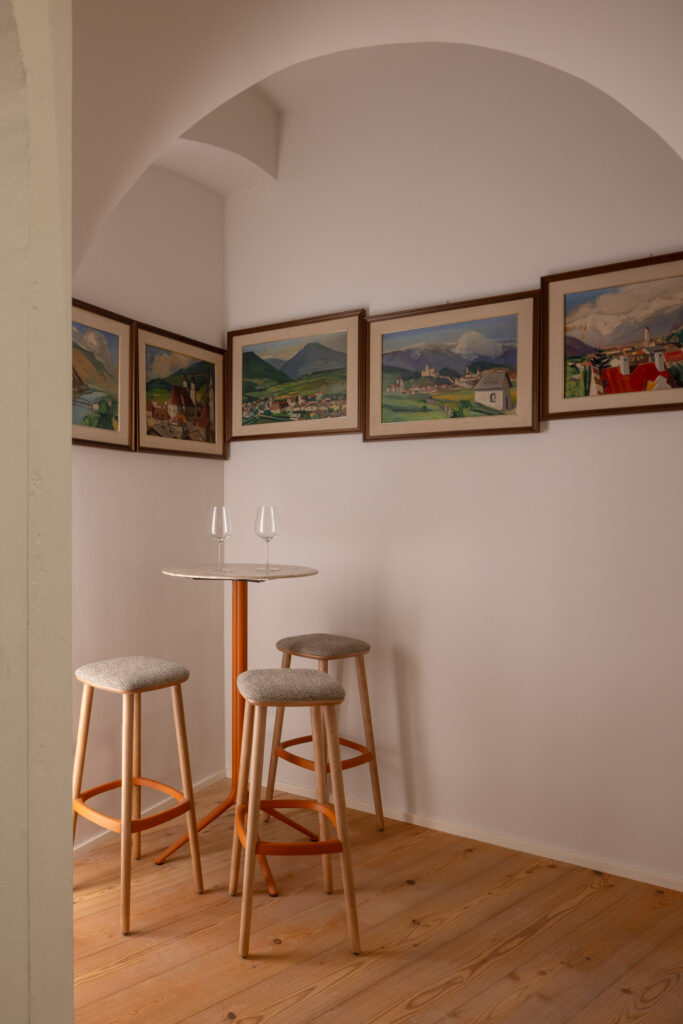

On the other hand, the project related to the Faller family’s collection, which includes over 100 works ranging from the 1600s to the mid-20th century, sought to create a dialogue between older and more modern works on the one hand, and between classical and conceptual installation techniques on the other, translating this encounter with light approach. The elevator room on the ground floor, known as the “patrons” room, features portraits of the couples who owned the place, with a special emphasis on their looks. Prominent among them are two paintings by Stephan Kessler (1622-1700) depicting the Thurner couple, with Rosina welcoming the guests at the room’s entrance. A little further away, in a “conversation” corner, a series of more modern paintings of local landscapes by Lesley de Vries (1926-2012) are placed side by side to unite the different horizons, thus creating a unique panorama and transforming the fragmented series into a simple and poetic installation.
Photo: Paolo Valentini
